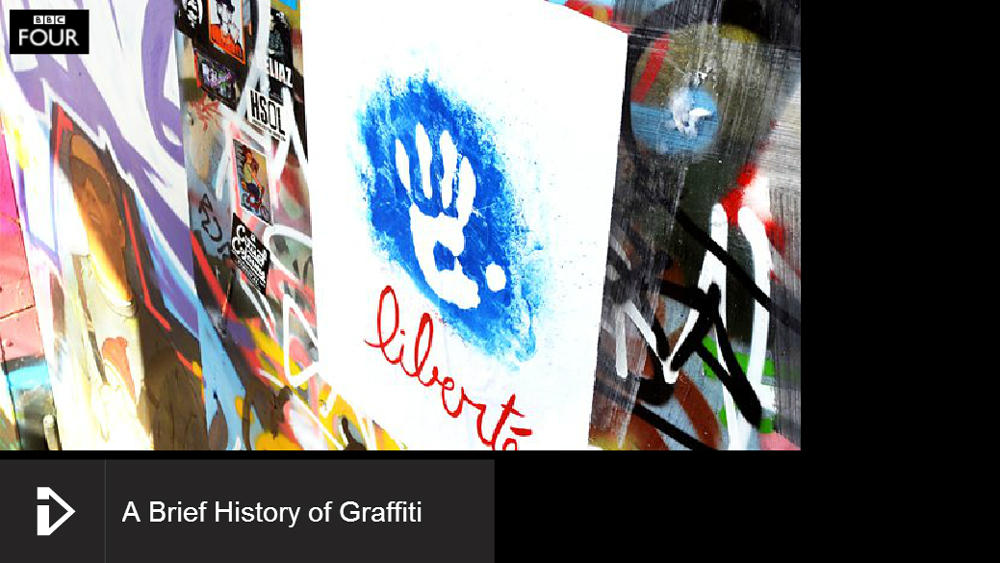


In a new BBC program 'A Brief History of Graffiti', Dr Richard Clay of the University of Birmingham in England asks whether graffiti is the artless scratching, scribbling and sprayings of vandals, or something much more interesting.
In considering 'marks on walls', Clay ponders the compulsion to leave a mark.
He believes that clues lie deep in our past. At this point we leave an urban street scene and steal our way to Burgundy in France where the story takes us deep into the Grottes d?Arcy cave system. He shows us the hand stencil of a child, from a time some 30,000 years ago.
This silent and lasting message on the wall seems to shout 'I was here' and 'don't forget me'.

A hand stencil, applied after the drawing of the mammoth, in the Recess of the Bears in Chauvet cave, France, and graffiti showing a hand giving the peace sign on a bridge pier in College Park, Maryland, USA.
Clay then looks at the painted figures and symbols in the cave, and asks if this is an example of the origin of graffiti. He goes on to state that marking the walls around us seems to be a part of what makes us human; the blank wall is a provocation to individuals, from artists to vandals.

For those who can access the BBC's iPlayer:
http://www.bbc.co.uk/iplayer/episode/b067fxfr/a-brief-history-of-graffiti
Visit the France Rock Art Archive:
http://www.bradshawfoundation.com/france/index.php
by Bradshaw Foundation
Monday 30 May 2022
by Bradshaw Foundation
Wednesday 19 January 2022
by Bradshaw Foundation
Thursday 06 January 2022
by Bradshaw Foundation
Monday 06 December 2021
by Bradshaw Foundation
Monday 29 November 2021
by Bradshaw Foundation
Monday 25 October 2021
by Bradshaw Foundation
Monday 12 July 2021
by Bradshaw Foundation
Monday 24 May 2021
by Bradshaw Foundation
Tuesday 20 April 2021
by Bradshaw Foundation
Thursday 01 April 2021
by Bradshaw Foundation
Tuesday 23 February 2021
by Bradshaw Foundation
Thursday 14 January 2021
by Bradshaw Foundation
Friday 18 December 2020
by Bradshaw Foundation
Sunday 06 December 2020
by Bradshaw Foundation
Thursday 26 November 2020
by Bradshaw Foundation
Wednesday 07 October 2020
by Bradshaw Foundation
Monday 30 May 2022
by Bradshaw Foundation
Wednesday 19 January 2022
by Bradshaw Foundation
Thursday 06 January 2022
by Bradshaw Foundation
Monday 06 December 2021
by Bradshaw Foundation
Monday 29 November 2021
by Bradshaw Foundation
Monday 25 October 2021
by Bradshaw Foundation
Monday 12 July 2021
by Bradshaw Foundation
Monday 24 May 2021
by Bradshaw Foundation
Tuesday 20 April 2021
by Bradshaw Foundation
Thursday 01 April 2021
by Bradshaw Foundation
Tuesday 23 February 2021
by Bradshaw Foundation
Thursday 14 January 2021
by Bradshaw Foundation
Friday 18 December 2020
by Bradshaw Foundation
Sunday 06 December 2020
by Bradshaw Foundation
Thursday 26 November 2020
by Bradshaw Foundation
Wednesday 07 October 2020
Friend of the Foundation











